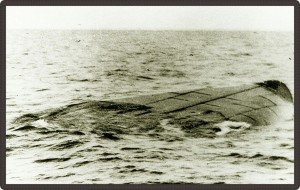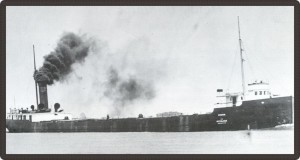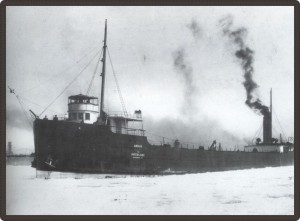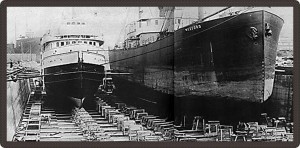The fate of the wreckage
 After the storm, wreckage washed ashore sporadically. While the Charles S. Price was found floating upside down a few days after the storm, it took years to find some of the others. However, the wreckage from the Argus was found in 1972, and four years later, the remains of the Isaac M. Scott was found; both were at the bottom of Lake Huron.
After the storm, wreckage washed ashore sporadically. While the Charles S. Price was found floating upside down a few days after the storm, it took years to find some of the others. However, the wreckage from the Argus was found in 1972, and four years later, the remains of the Isaac M. Scott was found; both were at the bottom of Lake Huron.
 60 years later, in the 1980s, the Regina was discovered, and is now part of an archeological project funded by the state of Michigan. The Wexford‘s wreckage wasn’t found until August 2000 in Lake Huron. The ship was found in an upright position under 75.4 feet of water, near St. Joseph, Ontario. The wreckage from the Henry B. Smith and the Hydrus still have not been found to this day.
60 years later, in the 1980s, the Regina was discovered, and is now part of an archeological project funded by the state of Michigan. The Wexford‘s wreckage wasn’t found until August 2000 in Lake Huron. The ship was found in an upright position under 75.4 feet of water, near St. Joseph, Ontario. The wreckage from the Henry B. Smith and the Hydrus still have not been found to this day.
 Other ships did not completely sink. The Louisiana went up in flames and burned to the waterline the day after the storm. It was declared a total loss. The Major was discovered afloat after the Great Storm and was recovered. In 1931, it was partially destroyed by a fire. The Matoa had a similar fate. Originally, it was declared to be a total loss, but it was recovered and rebuilt as part of a very costly reconstruction effort. It finally stopped sailing in 1937.
Other ships did not completely sink. The Louisiana went up in flames and burned to the waterline the day after the storm. It was declared a total loss. The Major was discovered afloat after the Great Storm and was recovered. In 1931, it was partially destroyed by a fire. The Matoa had a similar fate. Originally, it was declared to be a total loss, but it was recovered and rebuilt as part of a very costly reconstruction effort. It finally stopped sailing in 1937.
 Some vessels were refloated after they sank and were reused for a period of time. This was the case for the Turret Chief, the Howard M. Manna Jr, the U.S. Lightship No 82, the L.C. Waldo and the Halsted.
Some vessels were refloated after they sank and were reused for a period of time. This was the case for the Turret Chief, the Howard M. Manna Jr, the U.S. Lightship No 82, the L.C. Waldo and the Halsted.

